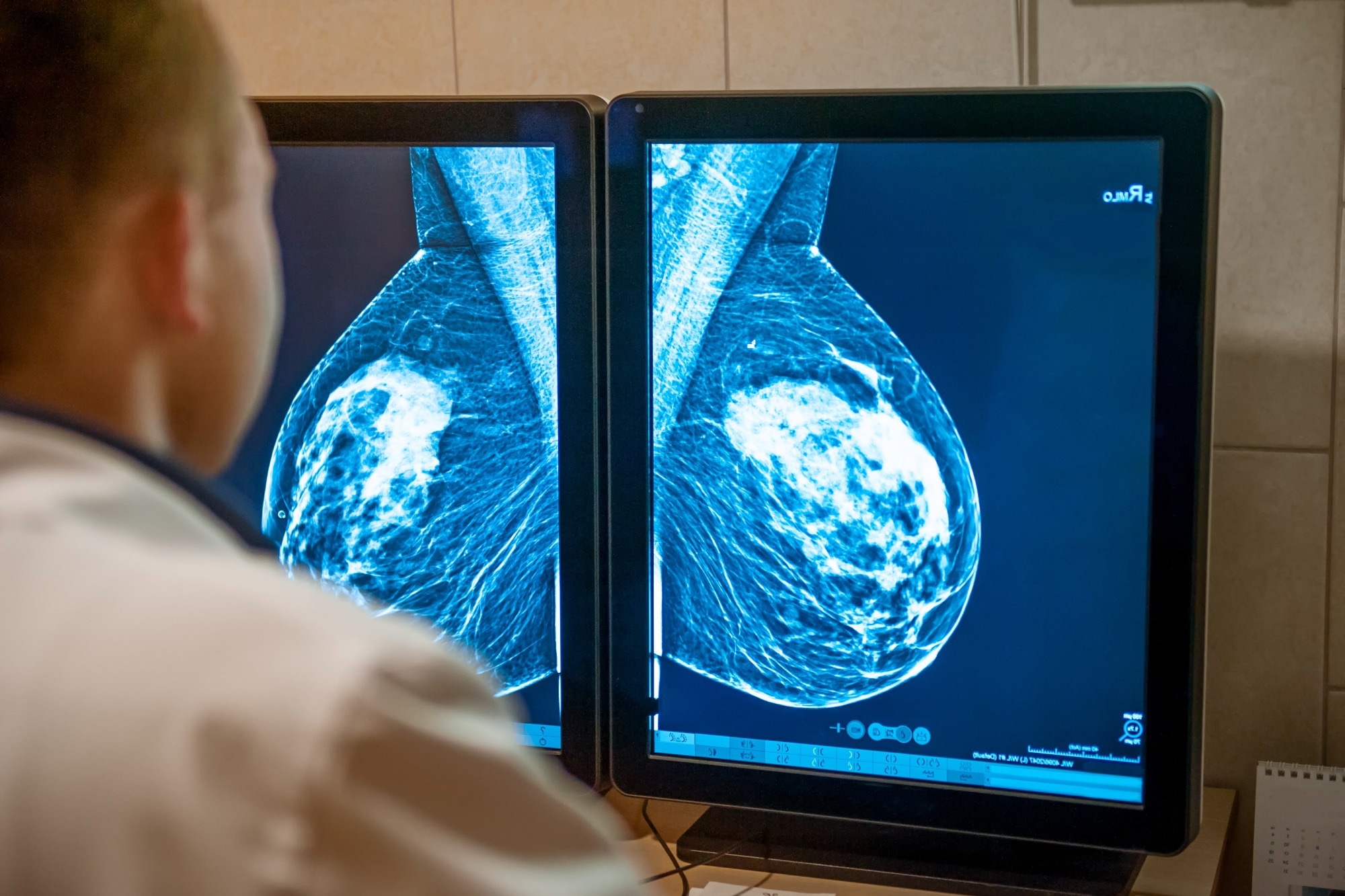By transforming “cold” tumors into “hot” immune-responsive ones, nanovaccines may redefine how doctors treat aggressive breast cancers like TNBC.
 Study: Novel strategies for nanovaccine application in breast cancer treatment. Image Credit: Okrasiuk/Shutterstock.com
Study: Novel strategies for nanovaccine application in breast cancer treatment. Image Credit: Okrasiuk/Shutterstock.com
A recent review in Frontiers in Pharmacology spotlights nanovaccines as a promising strategy to tackle the challenges of breast cancer immunotherapy, especially for triple-negative breast cancer (TNBC), the most aggressive and difficult-to-treat subtype. These nanoscale platforms are designed to deliver tumor antigens and immune-stimulating adjuvants directly to target sites, helping to turn “cold” tumors - those that typically resist immune response - into “hot,” immune-responsive ones.
About the Review
The preclinical review explores the latest advances in nanomaterial-based carriers for breast cancer nanovaccines, with a focus on their ability to overcome long-standing limitations in immunotherapy. The authors highlight the superior biocompatibility, adjuvant capacity, and immunogenicity of these platforms, which make them well-suited for addressing challenges like weak immune activation and poor drug selectivity - particularly in aggressive subtypes such as TNBC.
The review also details a range of nanovaccine preparation strategies aimed at enhancing antitumor immune responses. These include tumor neoantigen-based designs, biomimetic nanotechnologies for precise targeting, tumor microenvironment (TME)-responsive delivery platforms, and combination therapies that integrate nanovaccines with other treatment modalities. Importantly, the authors note that all findings are based on laboratory and animal studies - clinical validation is still needed.
An Introduction to Nanovaccines
Nanovaccines represent a significant step forward in cancer immunotherapy, offering targeted delivery of tumor-associated antigens and the activation of highly specific immune responses. Built on nanoscale carriers ranging from 10 to 1000 nanometers, these systems provide a high surface area, structural stability, and customizable surfaces - key features that allow for effective encapsulation and protection of fragile antigens.
Different types of nanomaterials bring unique advantages:
- Lipid nanoparticles (LNPs): Well-suited for delivering mRNA and peptide-based antigens
- Polymeric nanoparticles (PNPs): Enable sustained release and co-delivery of immune-stimulating adjuvants
- Inorganic nanoparticles (INPs): Offer exceptional structural stability
- Biomimetic carriers: Derived from natural sources like cell membranes or exosomes, enhance tumor targeting and immune activation
Unlike traditional vaccines, which often suffer from low antigen stability, generalized toxicity, and limited immune activation, nanovaccines co-deliver both antigens and adjuvants in a single platform. This enhances antigen presentation and activates both the humoral and cellular arms of the immune system. One of their key advantages is their ability to convert poorly immunogenic (“cold”) tumors into “hot” tumors that actively attract and engage immune cells.
In the context of breast cancer, and particularly TNBC, nanovaccines offer a compelling path forward. By reshaping the tumor microenvironment and driving targeted immune responses, they hold promise for more effective, personalized, and safer alternatives to conventional chemotherapy and existing immunotherapies.
Preparation Strategies to Enhance Antitumor Efficacy
Enhancing the therapeutic impact of nanovaccines in breast cancer hinges on strategies that improve antigen presentation and immune activation, primarily by enabling controlled, precise delivery of tumor-associated proteins. Several promising approaches are emerging, including the use of tumor neoantigens, biomimetic nanocarriers, tumor microenvironment (TME)-responsive platforms, and combination therapies with complementary treatments.
Tumor neoantigens, which are derived from tumor-specific genetic mutations, represent a major step forward in personalized cancer immunotherapy. Because they’re unique to cancer cells, these antigens can trigger strong cytotoxic T-cell responses with minimal risk of targeting healthy tissue. Protein- and peptide-based neoantigen nanovaccines, such as bioinspired autophagosome-like nanovaccines (BAPs) and Physalis Mottle Virus (PhMV)-based peptide nanovaccines, have shown encouraging results in preclinical breast cancer models.
These platforms promote dendritic cell maturation and generate durable T-cell responses. In TNBC mouse models, for example, BAPs significantly slowed tumor growth and extended survival, demonstrating strong immunostimulatory effects. Similarly, nucleic acid-based (DNA or mRNA) and viral vector-based neoantigen vaccines offer safe, degradable delivery systems that engage both humoral and cellular immunity.
Biomimetic nanotechnology takes this a step further by cloaking nanoparticles with tumor cell membranes or exosomes. This technique boosts tumor targeting, enhances immune recognition, and improves biocompatibility.
Notable examples include CCMP@R837 and MP@RHM, which are engineered to promote effective antigen presentation and long-term immune memory. Additionally, pH-sensitive nanovaccines are designed to take advantage of the acidic environment within tumors. These platforms trigger targeted antigen release only within the TME, reducing systemic side effects and maximizing local immune activation.
Combination therapies further amplify the impact of nanovaccines. Integrating treatments like photothermal therapy (PTT), sonodynamic therapy (SDT), or nanozyme-based approaches can increase immune cell infiltration, drive tumor cell death, and reshape the TME to support stronger immune responses. For instance, preclinical models of TNBC using PTT-nanovaccine combinations, such as iDP-NS + PD-L1 blockade and NIR-II NV, have shown notable reductions in tumor growth and recurrence.
Together, these preparation strategies underscore how advanced nanomaterials and immunoengineering can be combined to create highly targeted, potent, and adaptable nanovaccine platforms. These tools not only enhance antitumor immunity but also hold promise in preventing recurrence, offering new hope in the ongoing effort to develop safer, more effective breast cancer treatments.
Conclusion
Based on current findings, nanovaccines are reshaping breast cancer therapy by delivering tumor antigens with precision, activating robust immune responses, and remodeling the tumor microenvironment, particularly in hard-to-treat cases like triple-negative breast cancer (TNBC).
Translating these advances into clinical practice requires overcoming immunosuppressive barriers, refining delivery systems, and improving manufacturing processes. Future directions include the use of biomimetic nanocarriers, artificial intelligence-guided antigen design, and combination strategies with checkpoint inhibitors or conventional therapies.
With ongoing innovation, nanovaccines may progress from a preclinical concept to a powerful, personalized strategy for treating breast cancer.
Journal reference
Liu, H., & Ma, N. (2025). Novel strategies for nanovaccine application in breast cancer treatment. Frontiers in Pharmacology, 16, 1691991. DOI: 10.3389/fphar.2025.1691991. https://www.frontiersin.org/journals/pharmacology/articles/10.3389/fphar.2025.1691991/full